He’s the NFL’s Best Head Coaching Candidate. And He’s 30
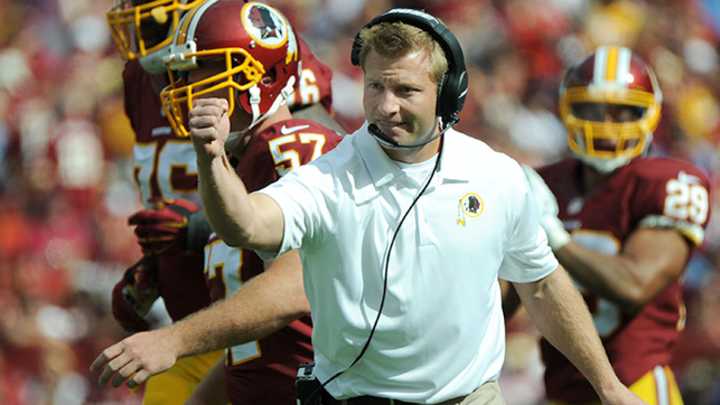
It’s a Tuesday night in June, and Washington’s football headquarters are mostly empty. It’s been a few hours since the second day of the team’s final minicamp practice wrapped up, and offensive coordinator Sean McVay is in his spacious corner office, watching film on a flat screen. There’s a light tap on the open door.
It’s Bill Callahan, the coaching lifer who now oversees Washington’s O-line. His eyes are twinkling. Really twinkling, like in a Disney cartoon. He has an idea for a new run play.
From behind his desk McVay leans forward as Callahan draws on a white board. “And so you know how we usually do this against these defensive fronts?” Callahan says. “Well, OK, OK, OK, follow me here. What if we, instead, were to do this?” He redraws the running back’s path to the other side of the formation, and now his eyes are twinkling even more.
So are McVay’s. “I love it,” McVay says, adding that Washington could also use it as a check (an audible) at the line of scrimmage. For the next 10 minutes, McVay, the NFL’s youngest coordinator at 30, and Callahan, a month shy of his 60th birthday, go back and forth, rapid fire, about when and how they can practice this new play; what they’ll tell the guards and centers to do; what they’ll tell the quarterback to look for; and how they’ll instruct the running backs to set up the cut.
Callahan got his first coaching job, at the University of Illinois, six years before McVay was born. He was head coach of the Oakland Raiders in Super Bowl XXXVII, when McVay was 16. Asked whether he has any issue working under someone half his age, Callahan quickly answers no. “[He] is in this position for a reason… he’s earned it.”
And at this rate, McVay won’t be in this position for much longer. Last season, his seventh as an NFL coach and first as a play-caller, he and head coach Jay Gruden took an unproven first-year starting quarterback and turned Washington into the league’s sixth most efficient passing game and 10th highest scoring offense.
“I’m sure,” says Gruden, “he’ll be a head coach a lot sooner than people think.”
* * *
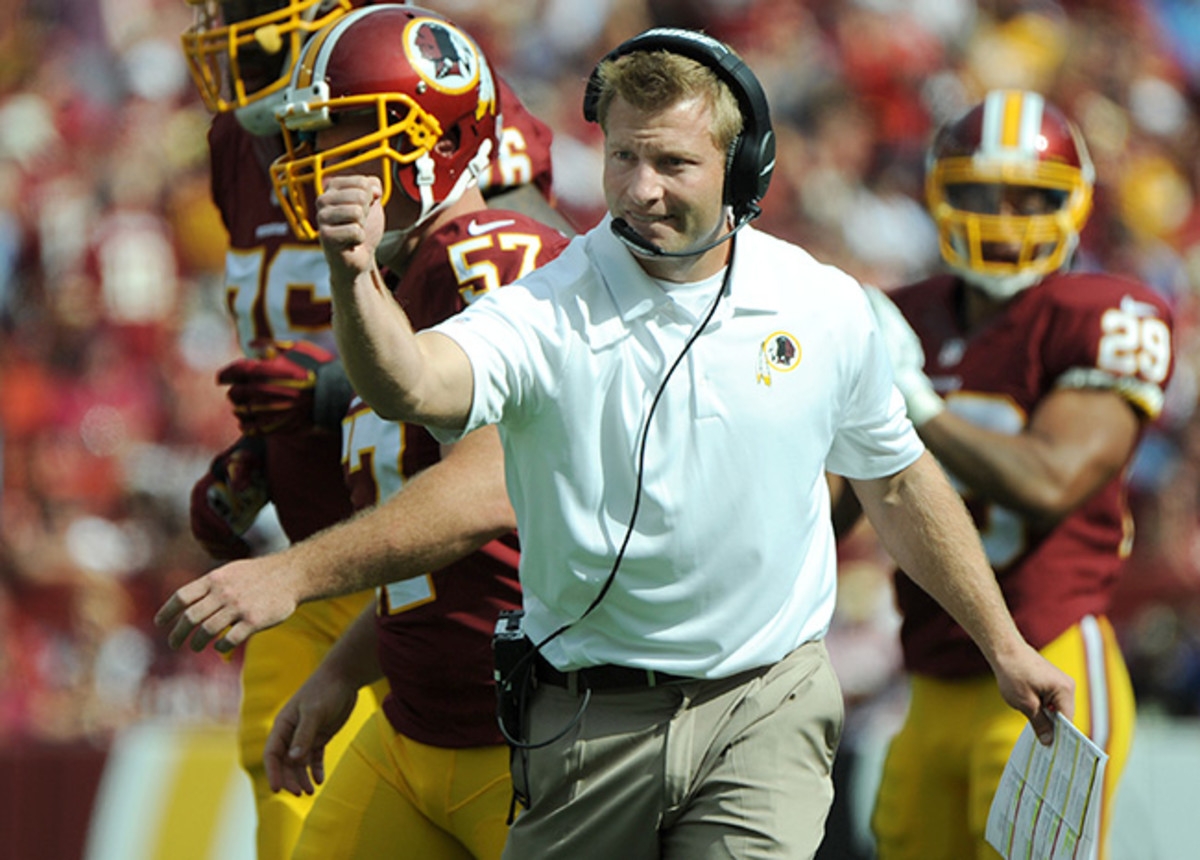
After Callahan leaves, McVay restarts the film. There are no wife and kids to get home to. He watches spring practice and raves about Kirk Cousins’ underrated quick release. “OK, OK, let’s look at just one more throw,” he says for a fourth time. Jordan Reed catches a touchdown. “Now that’s a dime. Look at that throw! That’s a dime!”
When the film ends, McVay puts on an old TV copy of the 1981 NFC championship, when Joe Montana and the 49ers defeated the Cowboys on a come-from-behind drive, culminating with The Catch. “Look at them march down the field,” he announces. “People think it’s Joe Montana winning this game. No sir. It’s this [smashmouth run play] ‘18-19 Bob!’ Look at all these extra bodies in the backfield. Here’s ‘18-19 Bob’ again!”
Dwight Clark makes The Catch. All done now, time for dinner?
“People also forget how much of an opportunity Dallas had after this play,” McVay says, settling in to now watch the forgotten proceeding Cowboys drive. (It ended with a lost sack-fumble on San Francisco’s 44-yard line.)
Because of McVay’s mannerisms “everyone teases him that he’s Baby Jon Gruden,” says Chris Cooley.
McVay wasn’t born until four years after the ’81 Niners’ Super Bowl run, but he has a special connection to the team: His grandfather, John McVay, was its VP/Director of Football Operations. That year produced the first of John’s astounding five Super Bowl rings during his 20 years heading San Francisco’s front office.
Sean, of course, grew up during the back half of his grandfather’s tenure. He lived in Atlanta and played catch with Jerry Rice and Steve Young whenever the Niners made their annual trip to town.
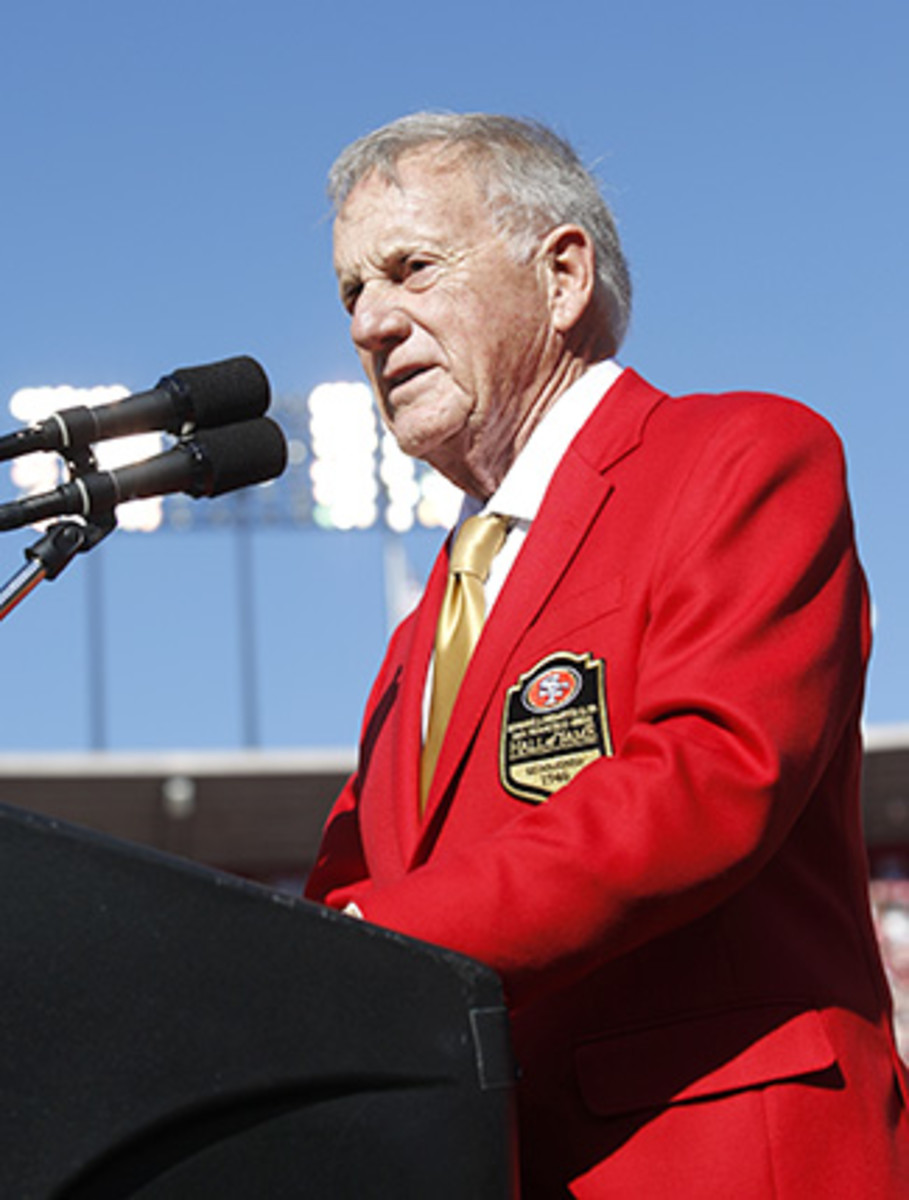
“I can remember being around those guys, being around Jeff Garcia and Terrell Owens,” he says. “They were always so great to me. At the time I was so young, you don't realize what a unique and neat experience it was.”
McVay played soccer as a youth. He took up football formally in eighth grade and went on to be a star option quarterback at Marist High, in Georgia’s ultra-competitive 4A class. “He was like a coach on the field,” says Marist coach Alan Chadwick, who’s been at the school for 30 years. “He saw things that a lot of players don’t see. He felt things a lot players don’t feel. And he was able to adapt and make things happen on his own.”
An elected captain, McVay after the season would take all of his offensive linemen to the Brazilian Steakhouse Fogo de Chão. “You don’t hear about that very often in high school,” says Chadwick. “You hear about it in college. Maybe in pros.”
McVay grew up in a traditional two-parent household. His father, Tim, a veteran TV news executive, played safety for Lee Corso at Indiana. There Tim met Sean’s mother, Cindy, who now owns an interior design business and helped her son buy and furnish his first town home after getting promoted to coordinator.
“Sean’s mom and dad are very comfortable in their skin,” says Chadwick. “And very comfortable in any atmosphere, any situation. Socially. In groups. Speaking in front of people. They’re just such class individuals. And so much of that, you can tell, rubbed off on Sean.”
* * *
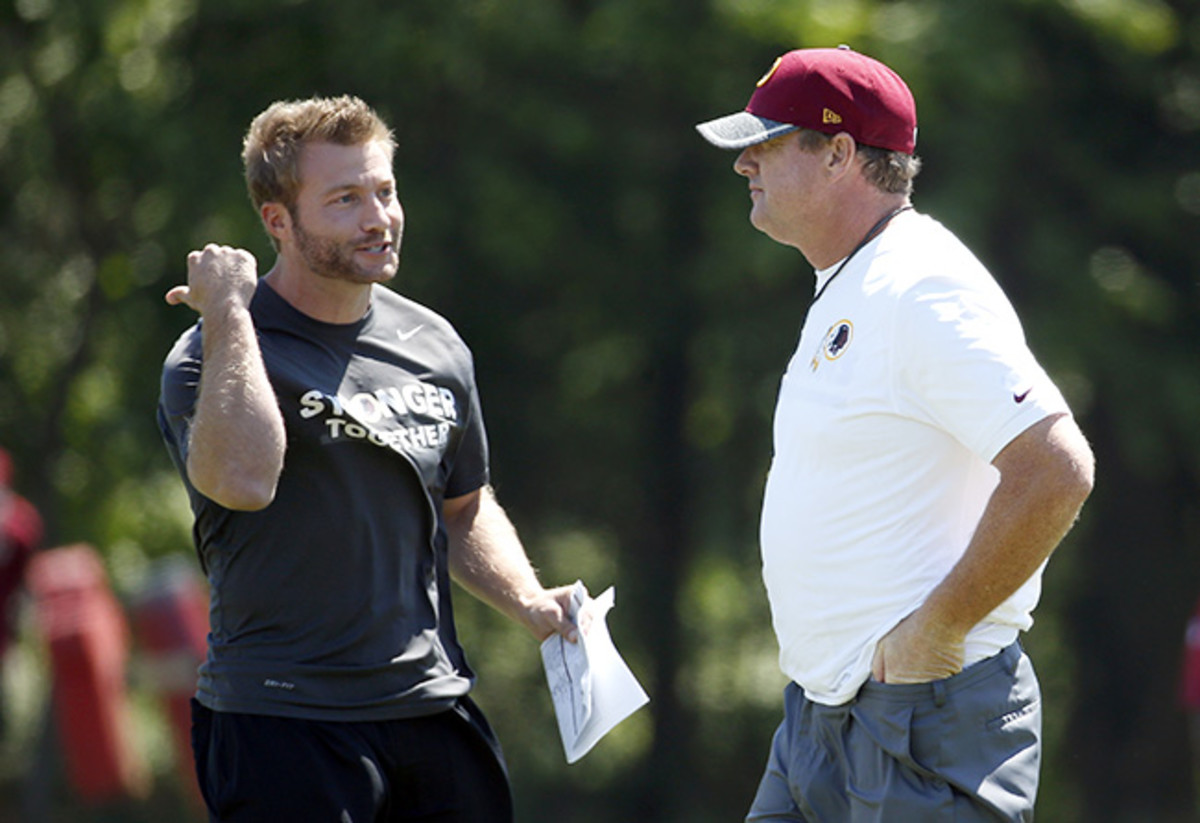
When visiting with McVay, you notice the confidence and vibrancy. You also notice the uncanny similarities to Jon Gruden. From the eyebrow cocking to the affirmative nodding and exaggerated, slow-motion hand gestures; it can feel like McVay is flat-out impersonating the Super Bowl winning coach. “Everyone teases him that he’s Baby Jon,” says former Washington tight end Chris Cooley. “His mannerisms are more like Jon’s than Jay [Gruden]’s are.”
There’s an explanation for that. In 2008, shortly before McVay graduated from Miami (Ohio), where his career as a receiver and return specialist was hindered by injuries, he went to the NFL combine in Indianapolis and interviewed for a job with Jon Gruden, a longtime family friend. Gruden hired him as an assistant wide receivers coach. McVay started immediately after graduating, skipping the graduation ceremony to get to the team’s offseason program.
After that first year, Gruden and his entire staff were fired—something McVay calls a blessing in disguise. He spent the 2009 season with the UFL’s Florida Tuskers, under head coach Jim Haslett (fired by the Rams after ’08) and with a little-known offensive coordinator named Jay Gruden. The Tuskers started 6-0 and reached the championship, but really, what defined that season for the coaches was the creation of Jon Gruden’s now famous Fired Football Coaches Association (FFCA). McVay spent hours each day in the classroom with Haslett and the Grudens. Reputed football experts from all over were flown in as speakers. Jon ran most of the meetings, and there was nowhere to hide. Attendees had to answer pop questions, get up and draw on the board and think miles outside the box. It was, as Cindy McVay puts it, like getting your masters in coaching.
Jay even says “I learned more about coaching football in those FFCA meetings than I probably did in seven years working for my brother.”
* * *
In 2010, McVay got an opportunity to interview with Washington’s Mike Shanahan for an offensive quality control job. The conversation transitioned from computers and data processing to actual football, and after a few hours Shanahan hired him on the spot. That year McVay worked quality control and also as an assistant to receivers coach Keenan McCardell. Then, with four weeks left in the season, tight ends coach Jon Embree left to take the head job at Colorado. McVay was promoted, and just like that, Washington had a 24-year-old running its tight ends meetings. In those meetings was the 28-year-old Cooley, a two-time Pro Bowler, and 24-year-old Fred Davis, who had been a second-round pick three years earlier.
“It didn’t matter where Sean came from, how old he was—the dude knew it better than anyone else,” says Cooley. “He was the best.
“I remember, in the first week that he took over, I was finally being coached intricately on some of the things that go into the tight end position. He taught every tiny nuance. I wish I would’ve gotten to work with him a lot longer. I loved all the coaches that I played for. I absolutely did. But I would’ve been better if I had worked with Sean for my entire career. I have no doubt about that.”
Shanahan never had any concerns about appointing such a young coach. “Players want to be taught,” he says. “If you can teach a player something that can keep him in the game, whatever it may be, they don’t care about your age.
“Getting a chance to watch Sean coach and handle himself, I knew he was going to be a coordinator and eventually a head coach in the National Football League.”
* * *
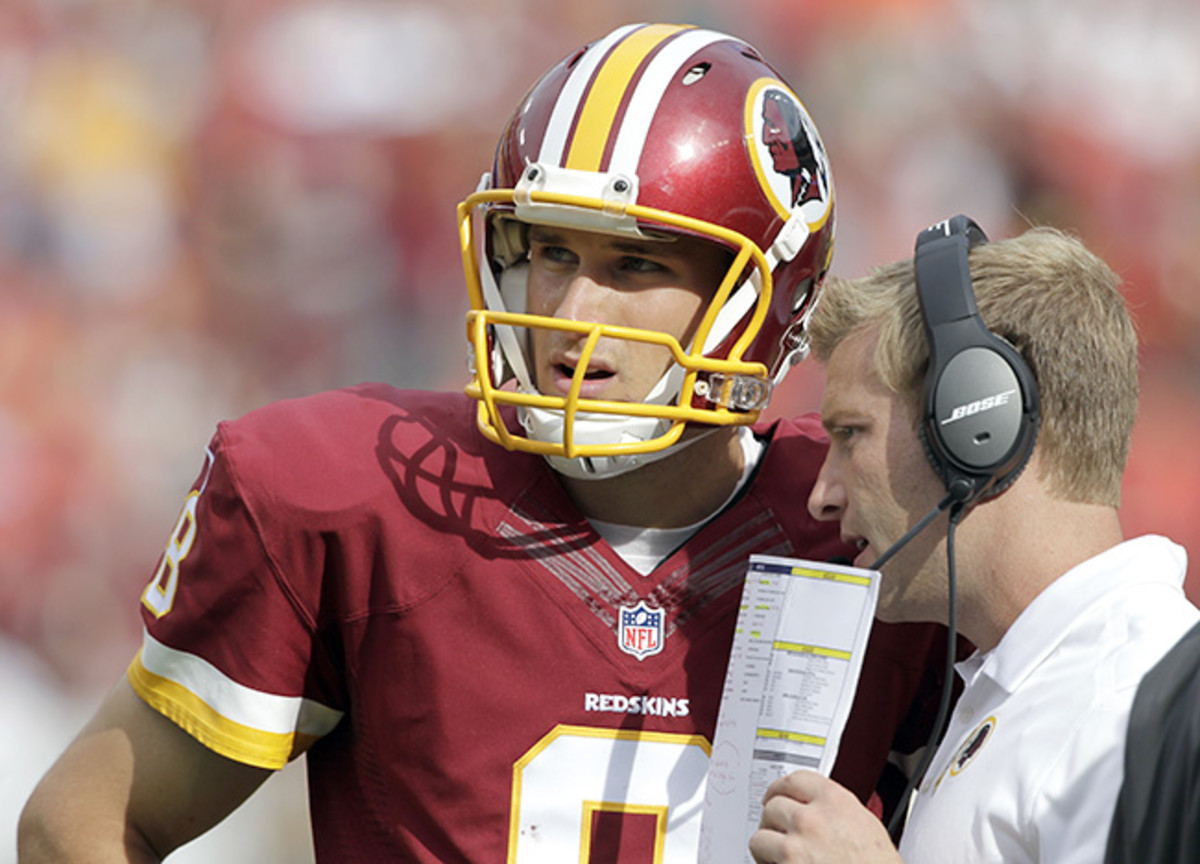
In 2014, Shanahan was fired and replaced by Jay Gruden, who had been the offensive coordinator in Cincinnati. At his introductory press conference, a reporter told Gruden there was a rumor that he would tab McVay as his offensive coordinator. “Nice, good for Sean,” Gruden said. And that, essentially, was how people learned who the new offensive coordinator was.
As Gruden explains, “Sean was here with Robert Griffin before I got the job, and with Kirk. He kind of knew the players that we had and the system that they ran. So I could try to transform a lot of my stuff into their language and it would be a smooth process.”
In 2015, Gruden quietly handed play-calling duties to McVay. Kirk Cousins was the new starting QB after spending the entire offseason working behind Griffin. (A lot of wasted practice reps those turned out to be.) In the second half of the season, Cousins threw for 2,212 yards, 19 touchdowns and two interceptions (passer rating: 126.1). Washington surged to an NFC East title.
What stood out again and again on film was how few plays the quarterback himself had to actually create. Washington’s system, with its array of formations, intertwined route combinations and zone running game married to play-action, was often defining the plays for him. Schematically, there may not have been a better-designed offense in football. Cousins, to his credit, allowed it to function and prospered under the circumstances.
“I could be here a long time talking about Sean’s help in my development and his ability to call plays for our offense and lead our offense,” says Cousins. “In the 2015 offseason I was coming off a year when I had been benched halfway through and was going into the next year with the chance to really only compete as a backup. I was a little disappointed with that and Sean was a great encourager through that process, challenging me to stay the course. I think his belief in me and his support and his encouragement was what enabled me to eventually have the opportunities that I had.”
From a pure strategic standpoint, Cousins explains that “part of the reason our offense has a lot of depth is because a lot of different guys get to touch the ball. That goes back to play-calling and the way Sean aligns players. You have to be creative with [weapons like] Jordan Reed, DeSean Jackson. That takes a lot of preparation and creativity and Sean does it on a week-in, week-out basis.”
Jackson took the rare personal measure of sitting down with an unknown media member to laud his coach. “Sean’s young but he’s still one of those guys that wants everything done right,” Jackson says. “He wants you to pay attention. He wants you to know what you need to do. And he’s very detailed about it. He breaks everything down in meetings. There’s nothing he doesn’t notice. He hits every part of the game.”
* * *
America wasn’t introduced to McVay until last season’s Wild-Card round, when FOX put him on full screen and analyst Troy Aikman sang his praises. Washington lost that day, scoring only 18 points, but that was not reflective of the game-planning. In the first quarter Jackson left a touchdown on the field by failing to explode to the front pylon on a crossing route. (Washington had first-and-goal from the one-yard-line and wound up kicking a field goal. McVay regrets running the ball twice on the first two downs that followed.) On the following series, a designed play-action deep shot got Jackson wide open over the top for a touchdown. However, the TV audience didn’t see that because Green Bay’s Julius Peppers beat offensive tackle Mike Compton around the edge to create a sack for Clay Matthews. People in the NFL noticed it on film, though. The score at that point would have been 12-0 Washington, if not for the sack.
Only two men in NFL history have become head coaches before age 32: Lane Kiffin with the 2007 Raiders and Harland Svare with the 1962 Rams. Both were short-tenured and neither had a season above .500. Perhaps that’s why McVay is eager but not necessarily antsy to land a head job.
“What’s absolutely incredible is Sean doesn’t have any ego,” says Cooley. “He will never say he believes he’s great. He knows he’s great at what he’s doing, but he’ll never tell you. He’ll be a head coach. And it won’t be long.”
McVay frequently uses the word “process” and values the personal growth that “processes” can bring. But another strong season as a play-caller, and NFL executives could stop whispering his name and actually start knocking. Like Callahan did after that minicamp, they’ll find the door open, McVay at his desk, ready to talk football.
Question or comment? Email us at talkback@themmqb.com.
